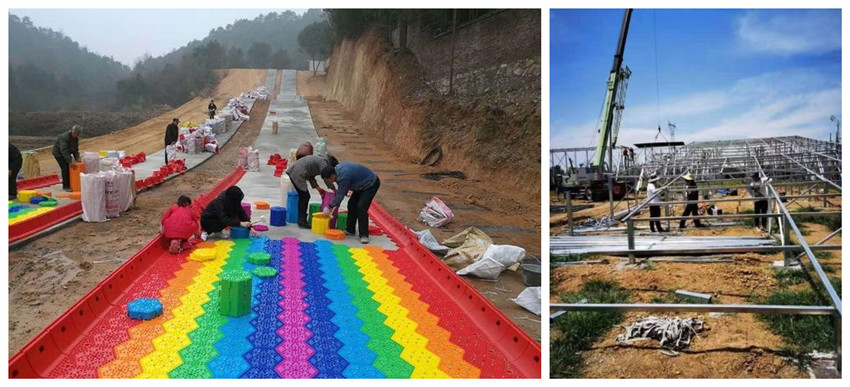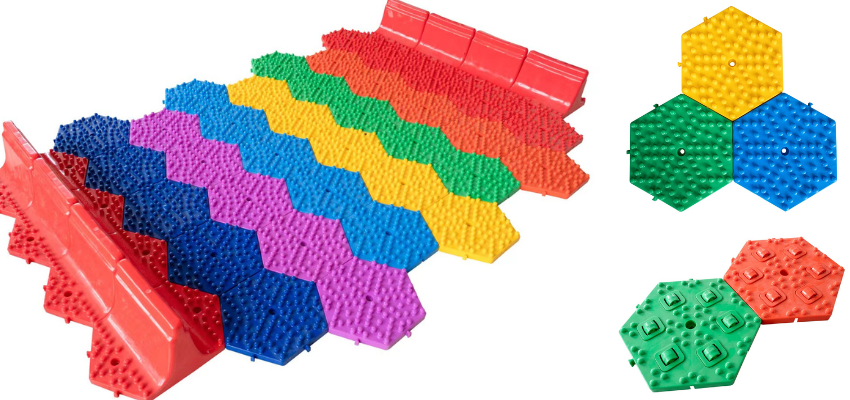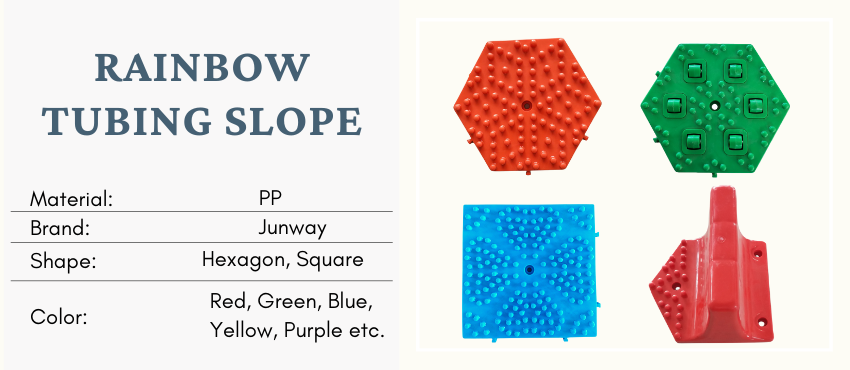How to Install A Fascinating Rainbow Slide?

Rainbow slide is very popular in recent years. Many people have great fun enjoying it. It is not only colorful, but from a distance as if the rainbow, and in the process of playing, the experience is very exciting. So the rainbow slide can be said to be loved by the majority of men, women and children. Do you know how to install so a fascinating rainbow slide? How much does it cost to build a rainbow slide?
Now, Junway will give you a brief demystification of the rainbow slide installation:

First, let's introduce the characteristics of the rainbow slide.
1. The tile surface is smooth, no obvious sharp edges, is safe to use and has no injuries.
2. The surface of the tile with rollers and small pillars. Rollers significantly reduce friction, which is conducive to increasing the speed of the slide; small pillars can make the snow tube naturally smooth slide down, to avoid emergency stops. So the rainbow slide's overall slide feeling is good.
3. The rainbow slide can design in different types, and fully adapt to the existing site. The slide can use the natural slope, if there’s no natural slope, you can use the steel frame artificially built slope. And rainbow slides can be built according to the terrain and investor preferences for straight slope, waving slope, jumping slope, etc.
4. Rainbow slide suitable for elders to seventy to eighty years old, little kids to 1-year-old baby (of course, to have a parent holding minions), a wide range of applications for visitors of different ages.
5. Installation, maintenance, and disassembly are simple. Easy to maintain, replace, relocate, and expand.
6. Rainbow slide has good anti-oxidation, anti-UV ability, is not easy to aging, outdoor use for more than 5 years.
7. Rainbow slide material is eco-friendly, easy to install and remove, and can be recycled and reused.

Second, the colorful rainbow slide material description.
1. Material is environment friendly
The main material is PE, with unique additives such as anti-oxidation, low-temperature resistance and UV resistance.
2. Standard tile specifications
The tile shape is hexagonal.
3. Lightweight
350g/pc
4. Vivid color, many colors to choose
Tile color: red, orange, yellow, green, blue, purple and other seven colors, or customized as you like.
5. Adapt to the temperature difference
Temperature range: minus 30 degrees to above zero 50 degrees.
6. Long using life
More than 5 years of use.

Third, the design and installation process.
1. Field survey site
Dispatched by the manufacturer, or the investor to measure the slope of the site. In general, the natural slope is more than 15 degrees, the length is more than 25 meters, the specific length can be determined according to the slope. The slide is mainly divided into a single slide and double slide, generally recommended for mixed use. If the site has a slope, then use the natural slope, can be slightly amended; no natural slope, available steel frame, scaffolding to build the slope.
2. Program design
By the rainbow slide manufacturers design construction program: the site measurement results and customer needs combined, design the relevant plan layout and ramp construction drawings, and consultation with customers.
3. Buffer zone design
The slide is affected by rain and snow. The buffer design needs to be considered in all weather conditions. It should be safe to slide down and smoothly stop, so the buffer area needs to be designed by the direction of decline in three sections for deceleration, deceleration effect step by step, and increasing friction, so that on sunny days, rain, snow are able to decelerate and stop, without hitting the protection.
4. Site cleanup
Clear the site debris, and adjust the site ramp and slope, to facilitate the later construction.
5. Ramp hardening and shaping
In order to ensure the smoothness of the construction ramp surface, the ground needs to be hardened during installation. Some sites do not allow hardening, you can lay wooden boards and other equipment instead of hardening.
6. Slideway laying
Normal construction, according to the construction drawings for the laying of the slide. After the completion of the paving, but also for its test slide operation, in order to observe whether the visitor sliding range is in the intended range.
The following picture shows the comparison before and after construction









